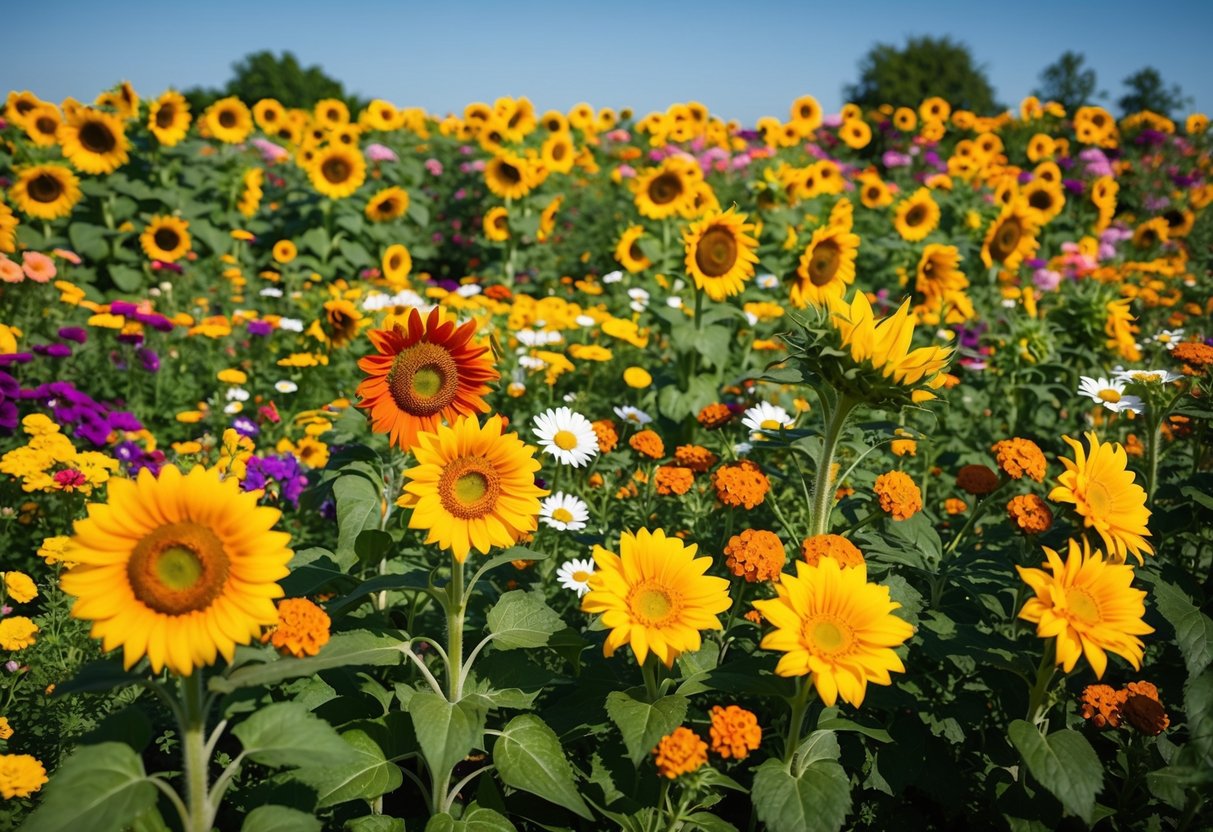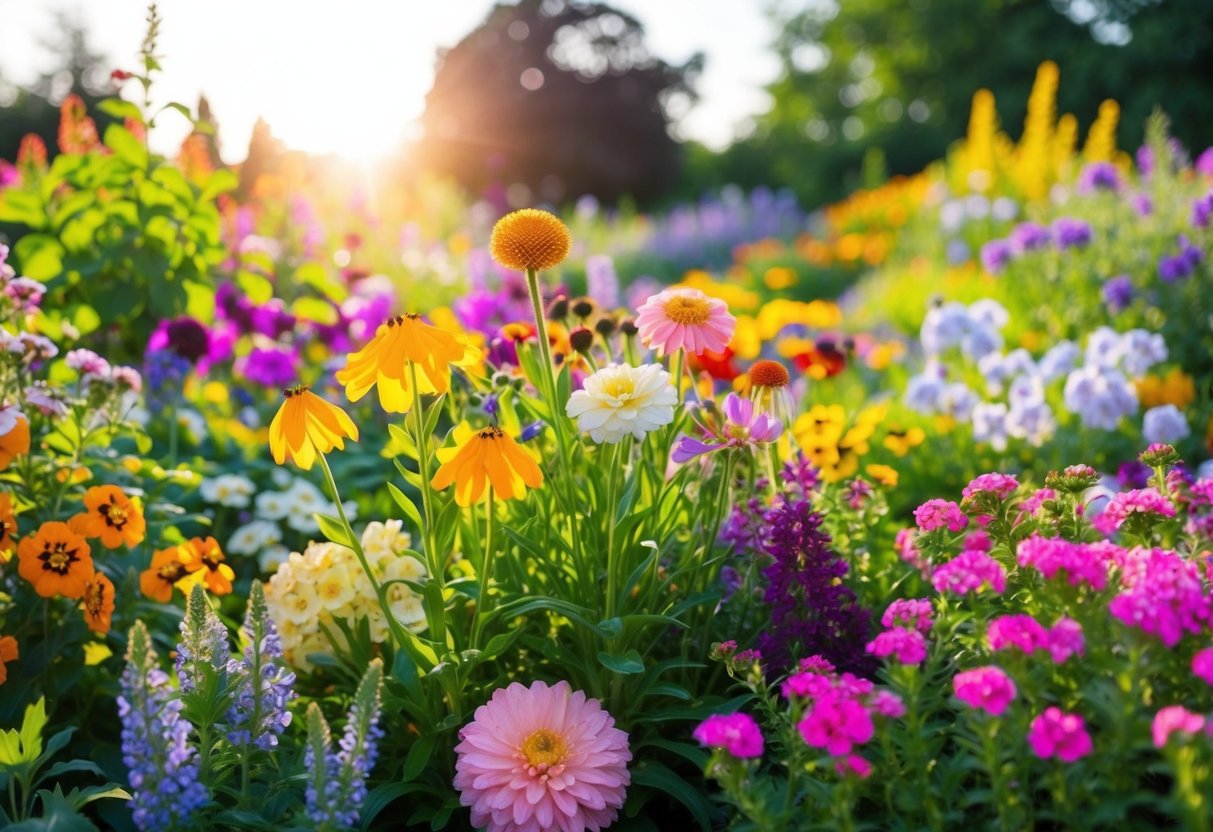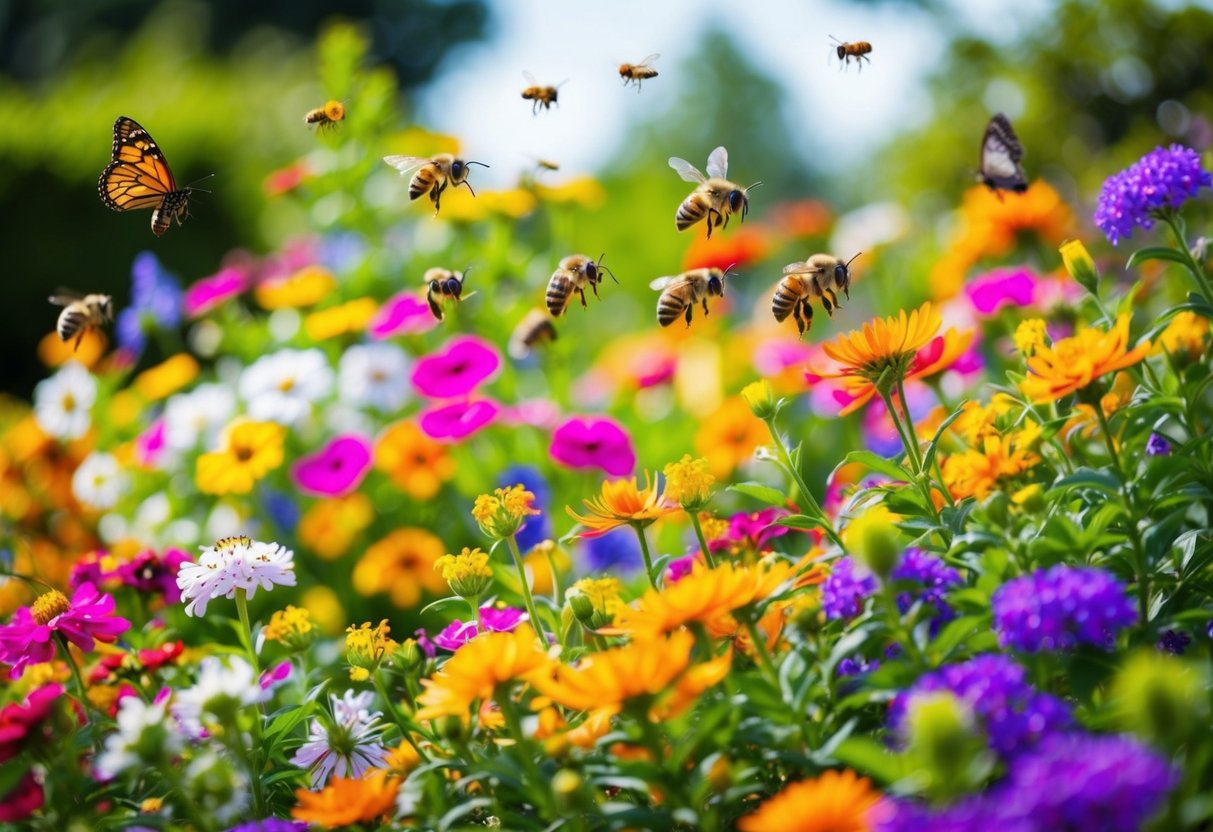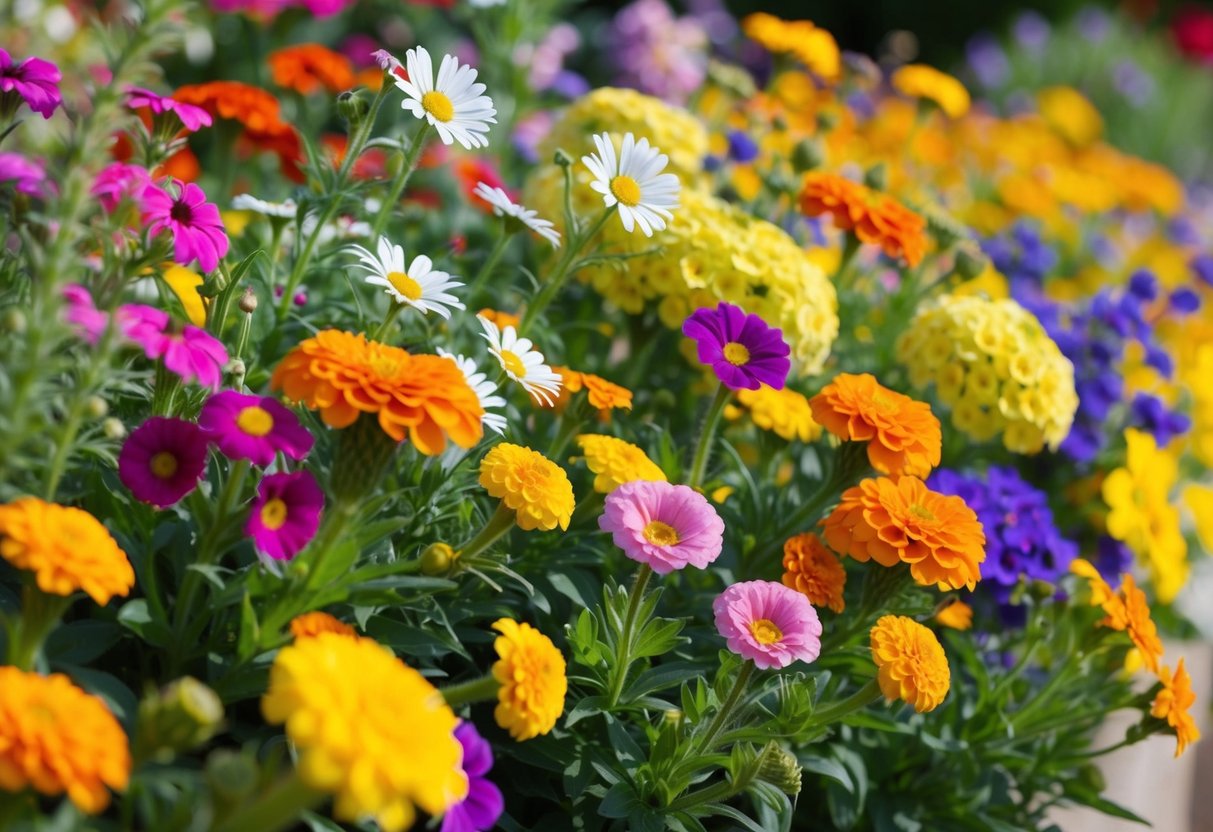What is the Best Flower to Bloom All Summer? Top Picks for Vibrant Gardens
When your garden bursts with color all summer, it becomes a haven you’ll love. So, what’s the best flower to achieve this effect? The vibrant coneflower often tops the list for its long-lasting blooms and striking appearance. With its hardy nature and beautiful hues, it’s a great addition to any garden.

Coneflowers bring more than just beauty. They attract butterflies, adding another layer of life to your yard. You might also consider other summer bloomers like the cheerful black-eyed Susan or the sturdy daylily.
It’s not just about picking one type; mixing different flowers that bloom all summer can create a lively, colorful scene. By combining cupflowers and perennials, you’ll enjoy a tapestry of colors and textures that thrive through the hottest months.
Choosing the Right Flowers for Continuous Summer Bloom

To enjoy summer blooms all season, you’ll want to understand the differences between perennials and annuals, consider the sunlight your garden gets, and check your soil type. Each factor influences which flowers will thrive in your garden.
Understanding Perennials vs. Annuals
When selecting flowers, knowing the difference between perennials and annuals is essential. Perennial flowers return every year, like the colorful dahlia and coneflower. They may require more investment upfront but generally need less maintenance over time.
On the other hand, annual flowers complete their entire lifecycle in one growing season. They provide vibrant colors and often bloom longer. If you enjoy changing your garden each year, annuals can offer variety.
Choose perennials for long-term color and annuals if you prefer a changing display. Mixing both can give you a beautiful garden throughout the summer months.
Assessing Sunlight and Shade Requirements
Understanding the sunlight conditions in your garden is vital for choosing flowers. Some flowers, such as the bright black-eyed Susans, require full sun to thrive, needing at least six hours of sunlight daily.
Others, like many types of lilies, do well in partial shade, managing with about 3-6 hours of sun. Assess your garden’s light to ensure you’re selecting the right plants for each spot, maximizing their blooming potential.
Positioning your flowers to match their sunlight needs will help keep them healthy and vibrant all summer long.
Considering Soil Conditions
The right soil conditions can make all the difference. Most blooms require well-drained soil to prevent waterlogging, which can harm roots. If your soil holds too much water, consider adding sand or organic matter to improve drainage.
Also, check your garden’s hardiness zone to ensure the flowers you choose will survive your local climate. For example, plant varieties that suit your zone can better endure seasonal changes, leading to healthier blooms.
Adjust your soil as needed and choose flowers compatible with your area for a successful blooming garden.
Top Perennial Flowers That Bloom All Summer

There are many beautiful perennial flowers that bloom throughout summer. Salvia, lavender, black-eyed Susan, and coneflower stand out for their beauty, resilience, and long blooming periods. Each of these flowers brings vibrant color and charm to gardens from early summer to the first frost.
Salvia
Salvia is a stunning choice for your garden. It is a hardy perennial with clusters of delicate flowers. Blooming through summer, salvia comes in shades of blue, purple, pink, and white. It is easy to care for and attracts pollinators like bees and butterflies.
The plant is drought-tolerant, making it perfect for sunnier spots in your yard. Salvia can grow up to 2 feet tall and can spread quickly, providing a lush look. With its fragrant foliage, this flower adds a refreshing aroma to any garden.
Lavender
Lavender is known for its enchanting fragrance and beautiful purple blooms. A sun-loving perennial, lavender thrives in well-drained soil. It usually blooms from early summer well into the fall. Lavender attracts bees and butterflies, enhancing your garden’s biodiversity.
This plant can grow up to 3 feet tall and is relatively low-maintenance. Besides its beauty, lavender is celebrated for its calming scent, often used in aromatherapy. Prune regularly to maintain its shape and encourage more blooms.
Black-Eyed Susan
Also known as Rudbeckia, black-eyed Susan is a cheerful plant with bright yellow flowers and dark centers. It displays a classic daisy-like charm and blooms for months. This perennial is hardy and tolerates heat and drought conditions. They make a lively addition to garden borders and wildflower gardens.
Black-eyed Susans can grow up to 3 feet tall, with a spread of about 2 feet. They attract butterflies and bees, and their vibrant blooms are excellent for cutting. Plant in full sun to ensure a long blooming season.
Coneflower
Coneflowers are popular for their striking appearance and easy-care nature. These perennials bloom all summer long and are known for their daisy-like flowers with drooping petals and raised centers. Coneflowers come in various colors, including purple, pink, and white.
They can reach heights of 1 to 4 feet and are drought-tolerant, making them ideal for sunny gardens. Coneflowers attract pollinators and birds, especially goldfinches that love their seeds. Ensure they are planted in well-drained soil for best results.
Top Annual Flowers for a Summer-Long Display

When choosing flowers for your garden, you want blooms that bring continuous color and vibrancy. Marigolds, petunias, zinnias, and geraniums are some of the best annual plants that can brighten your space all summer long.
Marigold
Marigolds are known for their vibrant colors and resilience. These annual plants come in shades of yellow, orange, and red. Marigolds thrive in full sun and are easy to care for. They make excellent border plants and resist pests, making them ideal for any garden.
You can plant marigolds in hanging baskets or flower beds for a pop of color. Regular deadheading ensures they keep blooming. These flowers are also great companions for vegetables, as they can help deter garden pests.
Petunia
Petunias are a favorite in gardens for their variety of colors and forms. These flowers bloom throughout summer, providing a spectacular show when planted in mass or in hanging baskets. Petunias are versatile and can thrive in pots or garden beds, preferring full sun.
To encourage petunias to bloom continuously, regular watering and removing spent blooms are essential. The trailing varieties are perfect for hanging baskets, creating cascading waterfalls of blooms. Their vibrant colors include pinks, purples, and whites, ideal for adding color to your garden space.
Zinnia
Zinnias are popular for their bright, daisy-like flowers and long blooming season. Known for attracting pollinators, zinnias are available in a wide array of colors, including red, pink, and white. These flowers are easy to grow and do well in sunny spots with well-draining soil.
Planting zinnias can add a vibrant touch to your garden beds or borders. Regular deadheading helps extend their flowering period. They are also disease-resistant and require minimal maintenance, offering a brilliant display all summer.
Geranium
Geraniums are another excellent choice for summer-long color. These annual plants come in shades of red, pink, and white, bringing beauty and variety to your garden. Geraniums can be grown in pots, hanging baskets, or directly in the ground.
These flowers prefer well-drained soil and thrive in sunny locations. To keep geraniums blooming, water them regularly and remove dead flowers. Geraniums not only add continuous color but are also known for their pleasant fragrance, making them a lovely addition to any garden setting.
Attracting Pollinators and Supporting Wildlife

Bringing pollinators into your garden enriches your environment and helps plants thrive. By choosing the right flowers and plants, you can support bees, butterflies, birds, and other wildlife.
Creating a Haven for Bees, Butterflies, and Birds
To attract pollinators, plant a variety of flowers that appeal to different species. Bee balm is a favorite of bees and hummingbirds. These vibrant flowers provide nectar during the summer months. Planting daisies and sunflowers can also help. They are easy to grow and serve as food sources for butterflies and birds.
Create different layers in your garden. Use a mix of flowering plants and shrubs to offer shelter and nesting areas. Small stones or a shallow birdbath can provide bees and butterflies with a place to rest and drink water.
Consider planting native plants because they are well-suited to local wildlife. These plants often require less maintenance and are more effective at supporting the ecosystem.
Choosing Flowers with Varied Blooming Times
Select flowers with staggered blooming periods to ensure a continuous food supply throughout the season. Early bloomers like crocuses provide an initial burst of nectar. Later, mid-season flowers such as bee balm and daisies keep pollinators coming back.
Late bloomers, like goldenrod, offer nectar as summer ends. By covering different flowering times, your garden will be a constant source of nourishment.
Incorporating diverse plants not only supports pollinators but also enriches the visual appeal of your garden. This variety ensures you contribute to the local ecosystem while enjoying vibrant colors all season long.
Flower Care Tips for a Lush Summer Garden

To keep your summer garden vibrant, it’s important to pay attention to watering, pruning, and using mulch and fertilizer wisely. These care tips will help maintain healthy, long-lasting flowers throughout the season.
Watering Wisely
Proper watering is crucial for a lush garden. During hot summer days, plants may need more water. Aim to water your garden in the early morning or late afternoon to reduce evaporation. This ensures that water reaches the roots efficiently.
Make sure your garden has well-draining soil to prevent waterlogging, which can harm the roots. If you have drought-tolerant plants, adjust your watering routine accordingly, as they typically need less frequent watering.
Use a soaker hose or drip irrigation system for even distribution and to conserve water. This helps ensure that moisture reaches the roots deeply and keeps flowers thriving all summer long.
Pruning and Deadheading
Pruning is key for healthy growth. Trim your plants to remove dead or diseased branches; this encourages fresh growth. It’s especially important for summer-blooming flowers to keep them looking their best.
Deadheading, or removing spent blooms, encourages plants to produce more flowers. This simple task keeps blooms coming throughout the summer.
Regular trimming also prevents plants from becoming too bushy, allowing light and air to reach all parts of the plant. This practice can promote healthier, long-lasting flowers and improve overall plant vigor.
Mulching and Fertilizing
Mulching has many benefits, including moisture retention. A layer of mulch—about 2-3 inches—helps soil stay cool and keeps roots healthy. It’s especially useful for gardens with drought-tolerant plants, as it conserves moisture during dry periods.
Choose organic mulch like bark or straw for added nutrients. Mulch also suppresses weeds, reducing competition for resources.
Fertilizing provides essential nutrients that support growth and flowering. Use a balanced, slow-release fertilizer to nourish your plants throughout the season. Apply according to the manufacturer’s instructions, typically once or twice during the summer.
Regular feeding helps maintain a robust garden, resulting in vibrant, healthy flowers that bloom all summer.







